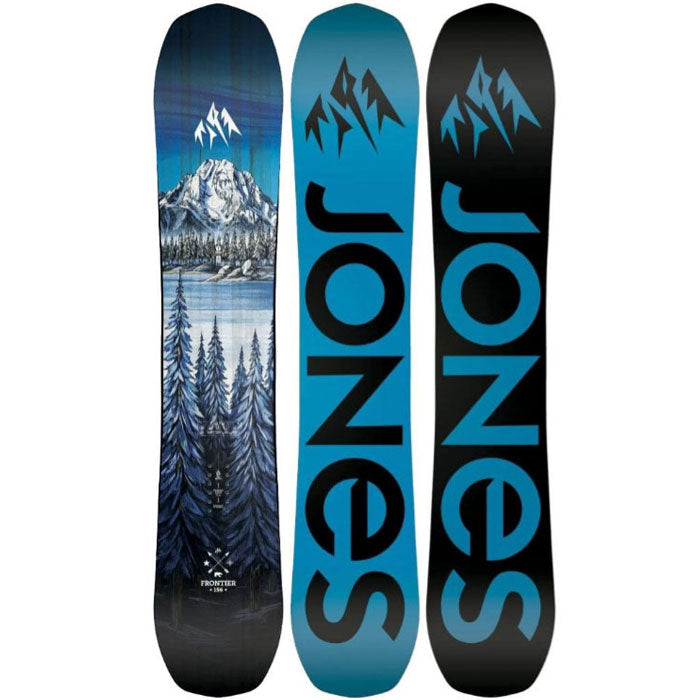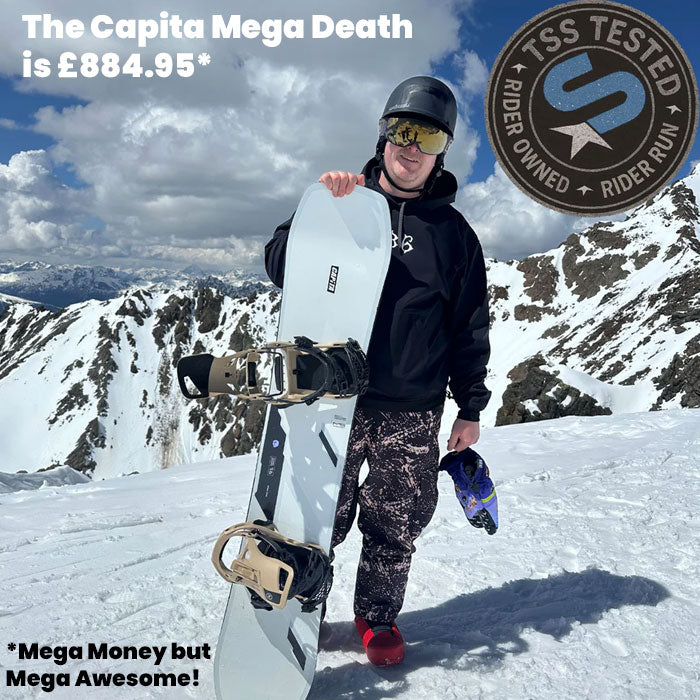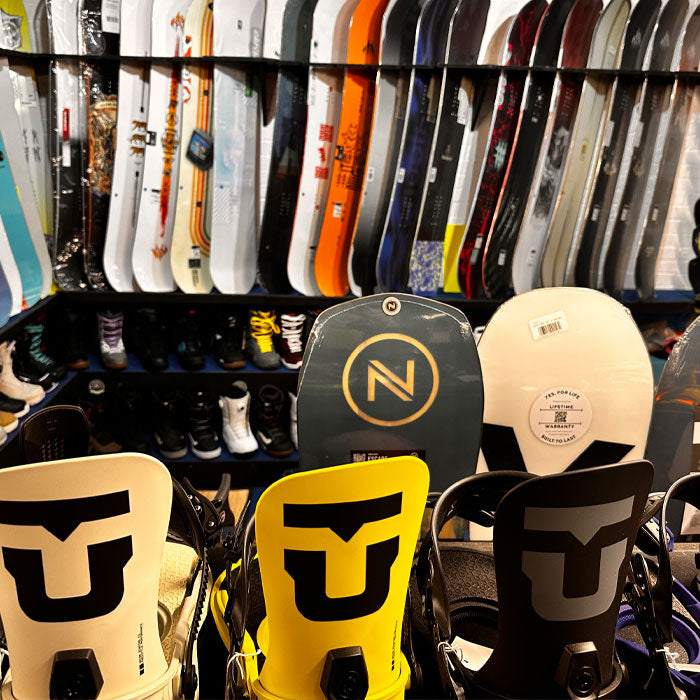
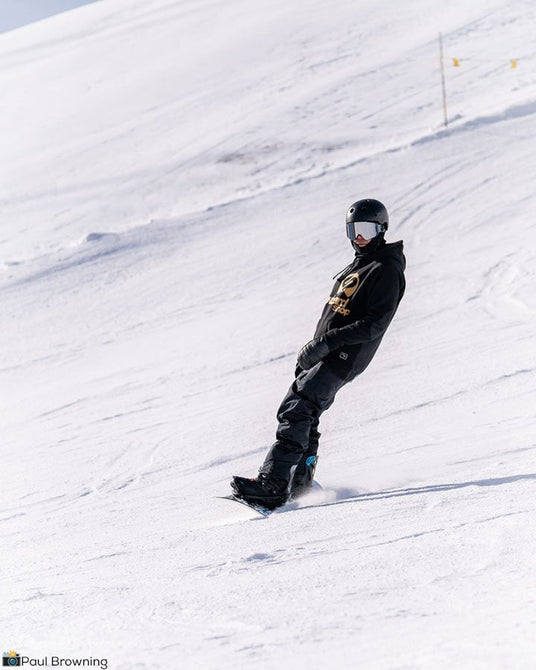
Buying your own snowboard can be a daunting task as there are literally hundreds of different models out there to choose from. Because we are real 'rider owned and run' independent snowboard shop (one of the few left in the U.K.), we have many years experience in both riding and selling the best snowboard kit on the market. We get out to the mountains a couple of times a year to specifically test lots of different snowboards and then buy the ones that we like and that we think you'd like too!
All the boards we stock are hand picked, but not all of them will be suitable for you so we'll try and make it a little easier for you by pointing you in the right direction about what type of things you should be looking for.
There's lots of important factors to consider including:
- Your ability / riding level
- Terrain you want to ride (all-mountain, park, jib, powder)
- Your size, including your weight and your boot size
- Your budget
- Graphics
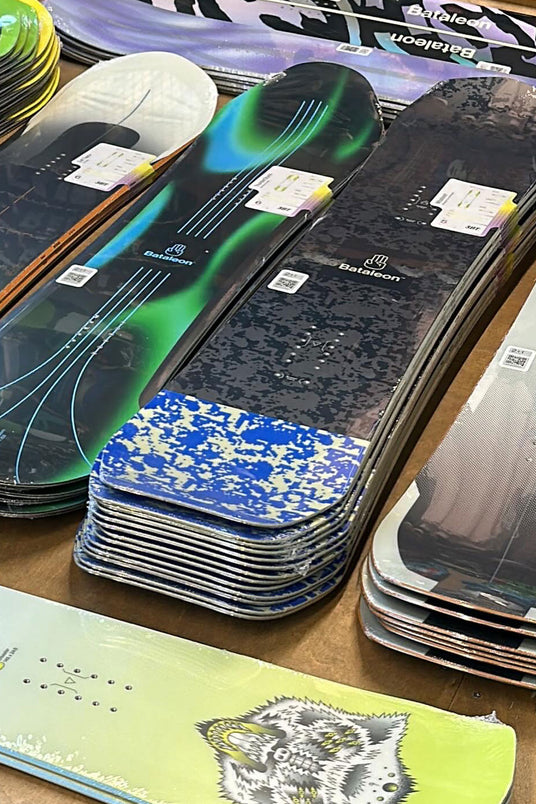
What Snowboard Ability are you?
This question gets a whole range of weird and random responses when we ask people in the shop. If you are self taught and have snowboarded for just one afternoon on a hill in the UK when we have had an inch of snow then we wouldn't necessarily categorize you as an expert rider and so we wouldn't try and sell you an advanced super responsive snowboard.
Snowboards that are designed for beginners are typically torsionally softer, less responsive and way more forgiving than a snowboard that is packed full of fibreglass and carbon. A snowboard will react to the input that it receives from the rider. If you are an advanced rider who has years of experience then you will be able to micro-adjust the amount of movement you put into the board which will then in turn make the board move in the way you expect. A more advanced and responsive snowboard will give you a super precise ride... great for experienced riders but not so great for learning.
If you are new to snowboarding and buy an advanced snowboard you will find it a harder to ride and it may put you off snowboarding for life (and we don't want that). Buy an entry level snowboard or maybe an intermediate snowboard and you will get the basics of snowboarding down in next to no time.
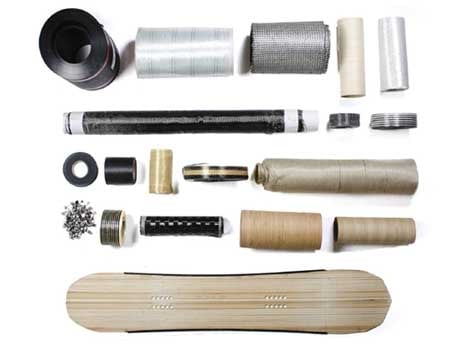
What is a snowboard made of?
Before we go into different models of snowboard that may be suitable its probably best to run through what a snowboard is made from as it will help you make your choice. Basically they have a plastic base (often referred to as PTEX), metal edges, a wooden core and layers of fiberglass.
The plastic base allows the snowboard to glide on the snow and depending on what grade of plastic is used, what extra ingredients are added, and how the base is manufactured and finished you will experience different amounts of friction and glide.
To give the snowboard it's torsion it has layers of fibre glass (and sometimes carbon). Essentially the more fiberglass and carbon the more responsive the snowboard. Entry level snowboards will have 2 layers of fiberglass (referred to as Biax) and will be torsionally forgiving. More advanced snowboard will have 3 (Triax) or more layers of fiberglass and sometimes stringers or carbon which will make them torsionally stiffer and more responsive.
Snowboard Manufacturers will then create the snowboard in a certain profile (or bend) from Rocker to Camber which again will affect its ride. Rocker snowboards (also known as Reverse Camber, Banana or V Rocker) are widely thought to be a little easier to ride and more playful. Camber Snowboards are a little harder to ride but naturally more poppy. Hybrid Snowboards (also known as Cam-Rock or Flying V) sit somewhere in between the two as you get the playfulness of a rocker mixed with the type of edge control and pop you get in a cambered snowboard.
[**It was only a few years ago that regular Cambered Snowboards were the only snowboards available. Loads of people (including myself) have learned on these so don't necessarily be put off by these when choosing**]
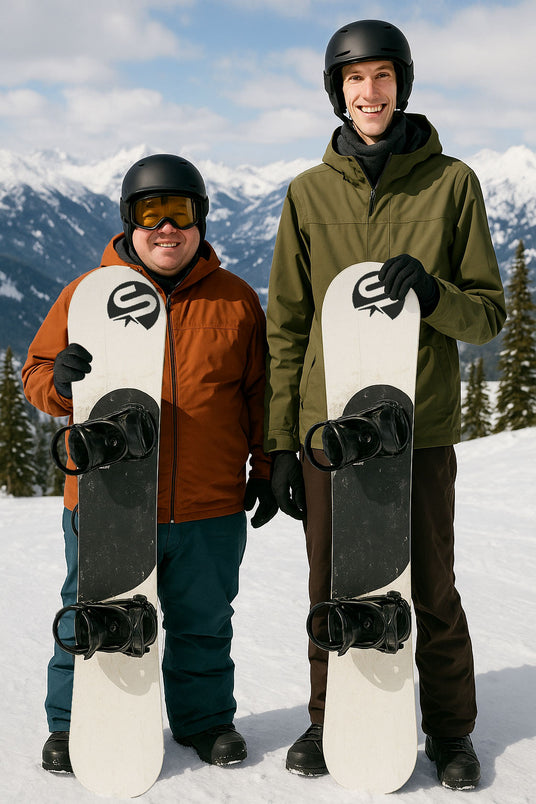
What Size Snowboard Should You Buy?
There are a few factors that we consider to help decide what size snowboard you should buy, but the three most important are:
- Rider Weight
- Terrain the board will be primarily ridden
- Boot Size
What about height? You thought you choose your snowboard length based upon how tall you are? Well you're not alone in thinking this, pretty much everyone who comes into the shop thinks the same. You can use height as a factor to help you decide and it's a little more valid if you as a person are in...er, well how do we put it, 'in proportion' 😳. If you are the correct weight for you height (whatever the hell that means) then you want your snowboard to be somewhere between your chin and your eyes. If you want a board purely to jib about with then maybe go a little smaller, perhaps to chest level. If you want a board just to freeride and charge hard then maybe go a little longer, maybe to the top of your head.
Confused? Well yes, it can be a bit confusing to chose the size based upon your height and in actual fact, you're best to choose the size base upon your weight. Most snowboards have size charts that specify 'recommended rider weight' for each model they produce. Because snowboards come in different shapes and widths these charts are very model specific. That's why it's important to choose your model of snowboard first and then get the correct size in that particular snowboard.
In regards to whether or not you need a wide snowboard, typically a standard width snowboard is good up to about a UK10 and a wide snowboard is better for UK10.5 and bigger. This obviously depends on the make and model of snowboard boots as some boots come up pretty big. If you mount you bindings in a 'duck stance' and push your bindings out further apart from each other to have a wider stance you can also get away with a narrower snowboard.


